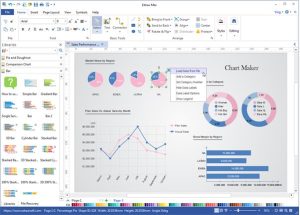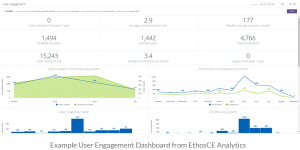
In the digital age, data is the lifeblood of businesses. However, raw data alone can be overwhelming and difficult to interpret. This is where data visualization comes into play. Data visualization transforms complex data sets into easily digestible visual formats, such as charts, graphs, and infographics.
For websites, data visualization is not just a tool for aesthetics; it's a powerful means to communicate information effectively, engage users, and drive informed decision-making. As we approach 2024, the importance of data visualization for websites is set to grow exponentially.
- Enhanced User Engagement
Data visualization can significantly enhance user engagement by making information more accessible and interesting. Users are more likely to interact with visual content than with plain text or raw data.

Interactive charts, dynamic graphs, and visually appealing infographics can keep users engaged for longer periods, reducing bounce rates and increasing time spent on the website.
- Improved Decision-Making
For businesses, data visualization can provide actionable insights that drive better decision-making. By presenting data in a clear and concise manner, stakeholders can quickly identify trends, patterns, and outliers.
This enables them to make data-driven decisions that can optimize operations, improve marketing strategies, and enhance overall business performance.
- Storytelling and Communication
Data visualization is an effective storytelling tool. It can convey complex narratives and insights in a way that is easy to understand and remember. For websites, this means that users can grasp the key messages and takeaways more easily.

Whether it's explaining the benefits of a product, presenting market trends, or showcasing performance metrics, visual storytelling can make the information more compelling and memorable.
- Increased Transparency and Trust
Transparency is crucial for building trust with users. Data visualization allows websites to present data in a transparent and credible manner.

By showing the data behind claims and statements, websites can build trust and credibility with their audience. This is particularly important for industries that rely heavily on data, such as finance, healthcare, and technology.
- SEO and Content Optimization
Data visualization can also have a positive impact on search engine optimization (SEO). High-quality visual content, such as infographics and interactive charts, can attract backlinks and social shares, which are important ranking factors for search engines.

Additionally, visual content can improve the overall user experience, which is another key factor in SEO. By optimizing visual content with relevant keywords and metadata, websites can further enhance their SEO efforts.
Conclusion
As we move towards 2024, data visualization will continue to be a critical component for websites. Its ability to enhance user engagement, improve decision-making, facilitate storytelling, increase transparency, and optimize SEO makes it an indispensable tool for any website aiming to stay competitive and relevant in the digital landscape. By leveraging the power of data visualization, websites can transform raw data into meaningful insights that drive value and engagement.



